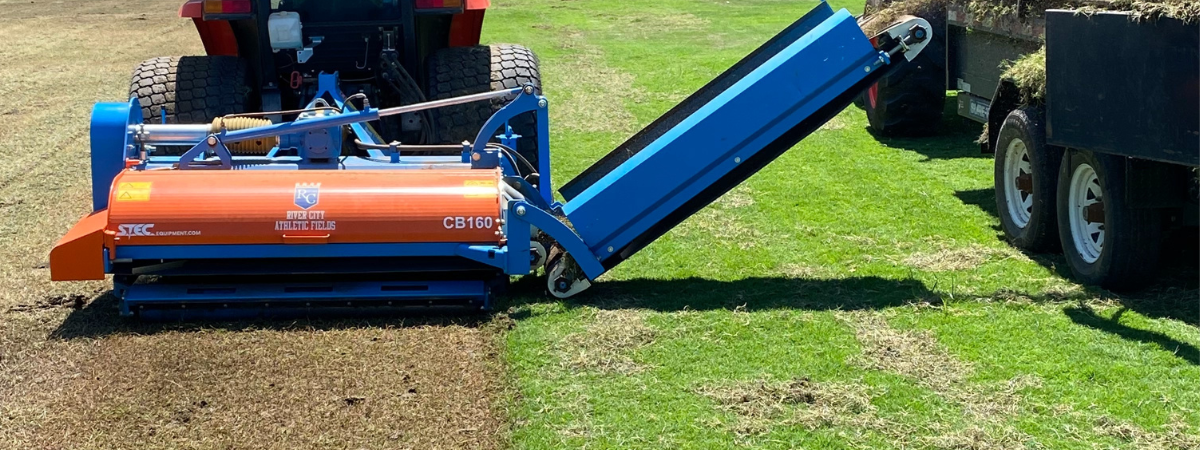Aeration is not a new concept in the turf industry. In this blog post, we’ll discuss why aeration has been a staple in the turf industry for decades, along with a few dos and don’ts.
The reason we aerate is simple: to get oxygen to the rootzone. There are many other reasons to aerate, but ultimately it comes back to oxygen. Some might say the reason is to alleviate compaction. This statement is true, but if you have compaction, there is not much space in the soil for oxygen. Others may say aeration will improve drainage. That’s also a true statement, but improving drainage involves creating more pore space in the profile for oxygen.
So, why do we need oxygen in the soil? It all comes down to the microscopic level and revolves around bacteria and fungi. Aerobic (needing oxygen) bacteria and fungi drive the mechanisms that make nutrients available for plants. Plants and microorganisms have a symbiotic relationship in which the plant breaks down and uses nutrients. For the most part, one cannot live without the other. But more importantly, aerobic bacteria and fungi cannot live without oxygen.
There are several different ways to aerate. Let’s take a look at a few.
Hollow Tine Aeration
This method involves using a hollow tine and pulling a core out of the ground. The pro is that it pulls a core out of the ground and leaves an opening to backfill porous materials like sand, calcined clay, or zeolite. These materials will decrease compaction and allow for more pore space. The cons of this method are the clean-up. Most of the time, the cores must be removed or broken up, which can be time-consuming.
Solid Tine Aeration
A solid tine simply sticks into the grown and then comes out. Some tractor-implemented solid tine units are better because they wiggle the tine in the ground. But either way, the solid tine method creates a hole in the ground. One benefit of this method is that it allows you to topdress or backfill materials into the hole. It also requires little to no core cleanup. The downside is that the solid tine can create some compaction on either side of the hole. While it is poking a hole, it’s not removing any material. The tine just pushes its way into the soil and pushes the soil to either side. Another con is that it limits the depth of penetration into the soil. Over time, if you only use the solid tine method, it can create a hard pan just below the depth the tine can reach. This layer can decrease the depth of roots and can also reduce water percolation through the profile.
Star Tine Aeration
This method is not the most popular, but it is better than nothing. Instead of creating a hole like the two methods described above, a metal disk slices into the soil. The pros and cons of this method are similar to those of the solid tine method. The penetration is extremely limited and doesn’t provide much more pore space.
DryJect/Air Injection
These systems use air pressure to inject air and other materials into the soil profile. The air is pressurized and blown into the soil, essentially blowing a hole. DryJect systems actually fill the hole with porous materials. It’s a very effective aeration method, but there are pros and cons. The pros are that there is little to no cleanup or topdressing, and it still effectively makes holes into the rootzone. On the other hand, these are specialized pieces of equipment that can be costly to purchase. Or you may have to hire a company that has one to come and use theirs.
HydroJect
This method is a very similar system to air injection. But instead of using air, it uses water to penetrate the soil profile and make a hole. Like air injection, there are similar pros and cons. On the pros side, there is little to no cleanup. The cons are that there must be a water source nearby, and it can be a pricey service or piece of equipment. HydroJecting is a very effective method, though.
Let’s wrap up the discussion with a few dos and don’ts. First, let’s discuss timing. The best time to aerate is when the warm-season plant is actively growing, which will give it an ample chance to grow back and heal. It is not advisable to aerate while warm-season plants are dormant. However, if winter is the only time available to aerate due to schedule conflicts, then something is better than nothing. You just need to make sure that there is little to no activity on the field during the dormant time. During the growing season, you can aerate multiple times. Just remember that the more you aerate, the more you need to feed the turf to push it to grow back.
At the university level, I aerated our football game field every week to remove dead ryegrass, alleviate compaction, and push the bermudagrass to grow. We also spread fertilizer once a week to maximize growth, which continued for about six weeks. That’s not normal, but it is an option. Generally, if you aerate multiple times during the summer, try to wait at least two weeks between aerations. It’s also best to wait 7–10 days before any sporting activity on the field. Football usually starts in the middle of August, so it’s best not to aerate after the end of July. Hopefully, these guidelines will assist you in determining when and how often to aerate.












